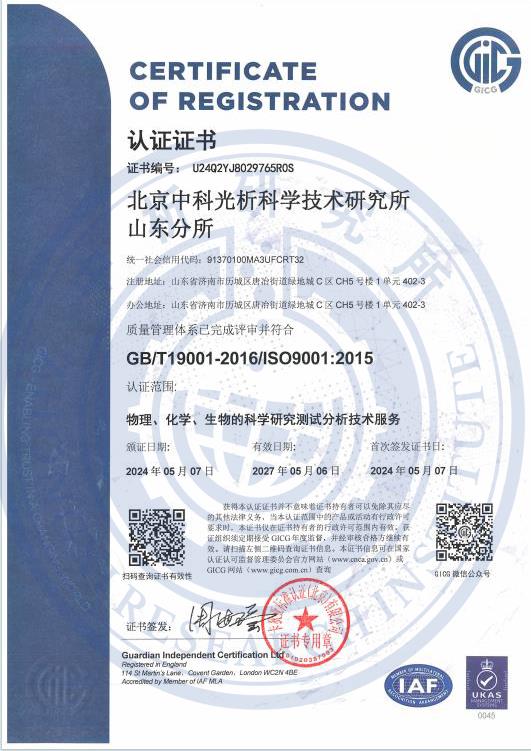头端柔软性检测
1对1客服专属服务,免费制定检测方案,15分钟极速响应
发布时间:2025-08-04 17:39:23 更新时间:2025-08-03 17:39:24
点击:0
作者:中科光析科学技术研究所检测中心
1对1客服专属服务,免费制定检测方案,15分钟极速响应
发布时间:2025-08-04 17:39:23 更新时间:2025-08-03 17:39:24
点击:0
作者:中科光析科学技术研究所检测中心
Head end softness detection is a critical quality control process in industries such as medical devices, electronics, and consumer products, where the "head end" refers to the tip or leading edge of components like catheters, probes, or injection needles. This testing ensures that the head end exhibits optimal flexibility and resilience to prevent tissue damage during insertion, minimize patient discomfort, and enhance overall product safety and performance. For instance, in medical applications, a soft head end allows for smoother navigation through bodily pathways, reducing the risk of perforations or trauma. Regular testing is mandated by regulatory bodies to comply with global standards, driving innovation in material science and manufacturing. Failure to meet softness requirements can lead to product recalls, increased liability risks, and compromised user trust. Therefore, robust detection protocols are essential for maintaining high standards in design, production, and post-market surveillance.
The significance of head end softness detection extends beyond compliance; it directly impacts user experience and operational efficiency. In minimally invasive procedures, a head end that is too rigid can cause complications, while excessive softness may lead to buckling or loss of control. Advanced testing methodologies now incorporate real-world simulations, such as mimicking physiological conditions, to provide comprehensive data on how the head end behaves under stress, temperature variations, and repeated use. As technology evolves, this field continues to integrate AI-driven analytics for predictive maintenance and quality assurance. Ultimately, thorough head end softness detection not only safeguards end-users but also accelerates product development cycles and reduces costs by identifying defects early in the supply chain.
Detection items for head end softness focus on quantifying key mechanical properties that define flexibility and durability. Primary items include softness index, bending stiffness, elastic modulus, and compressive strength. The softness index measures the force required to deform the head end under controlled loads, with lower values indicating greater flexibility—critical for devices like urinary catheters where smooth insertion is paramount. Bending stiffness assesses resistance to angular deflection, ensuring the head end doesn't buckle during use. Elastic modulus evaluates material resilience, testing how well the head end returns to its original shape after deformation, while compressive strength gauges resistance to crushing forces, vital for high-pressure applications like vascular interventions. Additional items may include surface friction analysis and fatigue testing to simulate long-term wear, covering aspects like material composition, coating integrity, and geometric design variations.
A range of specialized instruments is employed for precise head end softness detection, ensuring accuracy and repeatability. Common tools include universal testing machines (e.g., Instron or Shimadzu models), which apply controlled tensile, compressive, or bending forces to measure deformation and force-response curves. Bending testers, such as cantilever beam setups, quantify stiffness by recording deflection angles under incremental loads. Micro-indentation hardness testers (e.g., from Mitutoyo) assess surface softness using micro-scale probes, while optical or laser-based systems, like digital image correlation (DIC) devices, capture real-time deformation without contact. For environmental simulations, climate chambers integrate with these instruments to test softness under varying temperatures and humidity. Advanced setups may include robotic arms for automated handling and high-speed cameras for slow-motion analysis, ensuring comprehensive data collection across different head end materials like silicone, polymers, or metals.
Detection methods for head end softness involve standardized procedures to ensure consistency and reliability. The primary method is the three-point bending test, where the head end sample is placed on two supports, and a force is applied at its midpoint via a loading probe; the resulting deflection curve is analyzed to calculate softness parameters. Another common approach is compression testing, where the head end is subjected to axial loads to measure compressive deformation. For dynamic assessments, cyclic loading tests simulate repeated insertions to evaluate fatigue resistance over time. Methods often include sample preparation steps, such as conditioning at room temperature, mounting the specimen without pre-stress, and calibrating instruments. Data acquisition involves using software like LabVIEW to record force, displacement, and time metrics, followed by statistical analysis to determine pass/fail criteria based on predefined thresholds for deformation limits and hysteresis loops.
Detection standards govern head end softness testing to ensure global interoperability and regulatory compliance. Key standards include ISO 10555-5 for intravascular catheters, which specifies requirements for flexibility and deflection tests under physiological conditions. ASTM F2150 provides guidelines for mechanical testing of medical devices, covering bending stiffness and elastic modulus measurements. Additionally, EN ISO 10993 addresses biocompatibility aspects, linking softness to material safety. For electronics, IEC 60068 outlines environmental testing methods that include softness evaluations under thermal stress. These standards mandate specific test conditions, such as force application rates, sample sizes, and acceptance criteria, often requiring documentation of traceability to accredited labs. Compliance with standards like FDA 21 CFR Part 820 or EU MDR ensures that products meet safety benchmarks, facilitating market access and reducing litigation risks through rigorous, standardized protocols.

证书编号:241520345370

证书编号:CNAS L22006

证书编号:ISO9001-2024001















版权所有:北京中科光析科学技术研究所京ICP备15067471号-33免责声明